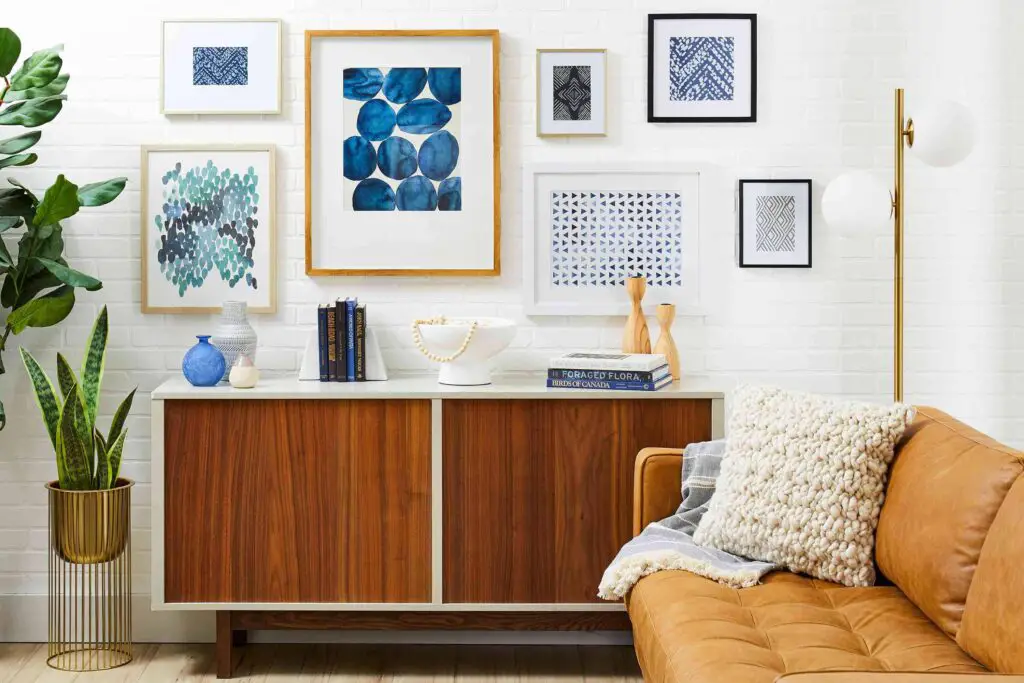Introduction
In the world of interior design, the use of fabric wall hangings has become a popular and versatile way to enhance the aesthetic appeal of any room. Not only do they bring texture and color, but they also add a sense of warmth and personality that can transform a space. Whether you are looking to make a bold statement or create a cozy atmosphere, fabric wall hangings offer endless possibilities for customization and creativity. This article will explore the various types of fabric wall hangings, their benefits, and how to incorporate them into your home decor effectively.
What Are Fabric Wall Hangings?
Fabric wall hangings are decorative pieces made from various textiles designed to be hung on walls. They can range from simple tapestries and quilts to intricate macramé and woven art. These pieces can be crafted from a wide array of materials, including cotton, wool, silk, and synthetic fibers, allowing for a diverse range of textures and patterns. The flexibility in design and material choice makes fabric wall hangings a favorite among designers and homeowners alike.
Types of Fabric Wall Hangings
- Tapestries: Tapestries are large, woven pieces of fabric often featuring intricate designs or scenes. Historically, they were used as insulation and decoration in castles and large homes. Today, they serve as stunning focal points in modern interiors, offering a blend of traditional craftsmanship and contemporary design.
- Macramé: This art form involves knotting threads or cords into intricate patterns, creating beautiful, textured pieces. Macramé wall hangings have seen a resurgence in popularity, particularly in bohemian and minimalist decor styles.
- Quilts: Traditionally used as bed coverings, quilts have found a new life as wall hangings. They bring a sense of history and craftsmanship, often featuring patchwork designs that tell a story or celebrate heritage.
- Weavings: Similar to tapestries, woven wall hangings focus on texture and color. Artists and crafters can experiment with different weaving techniques, incorporating various materials to create unique pieces that add depth and interest to any room.
- Printed Fabric Art: These are pieces of fabric with printed designs, ranging from abstract patterns to photographic images. They offer a simple and often more affordable way to introduce art into a space.
Benefits of Fabric Wall Hangings
- Versatility: Fabric wall hangings can be used in any room, from living spaces and bedrooms to kitchens and bathrooms. They are available in a multitude of styles and sizes, making them suitable for both large and small spaces.
- Texture and Depth: Unlike traditional framed art, fabric hangings add a tactile element to a room. The texture of the material can create visual interest and depth, enhancing the overall aesthetic of the space.
- Warmth and Acoustics: Fabric can help soften the acoustics in a room by absorbing sound, reducing echo, and creating a cozier atmosphere. This is particularly beneficial in larger spaces with hard flooring and minimal furnishings.
- Personalization: Fabric wall hangings offer an opportunity for personalization and self-expression. Whether you choose a piece that reflects your cultural heritage, interests, or artistic taste, these hangings can convey your personality and style.
Incorporating Fabric Wall Hangings into Your Decor
- Choosing the Right Piece: Consider the size of the wall and the overall aesthetic of the room when selecting a fabric wall hanging. A large tapestry can serve as a focal point, while smaller pieces can complement existing decor.
- Color and Pattern: Choose colors and patterns that enhance the room’s existing color palette. A bold, colorful hanging can liven up a neutral space, while a subtle, monochromatic piece can add elegance to a busy room.
- Placement: The placement of your fabric wall hanging is crucial to its impact. Hang it at eye level to ensure it draws attention. Consider grouping multiple pieces for a gallery effect or layering them over other decor for added dimension.
- Mixing Textures: Combine fabric wall hangings with other materials, such as wood or metal, to create a dynamic visual contrast. This approach can add depth and interest to your decor.
- Theme and Style: Align the style of your wall hanging with the room’s theme. For a bohemian look, opt for macramé or woven pieces. For a classic or traditional room, choose a tapestry or quilt.
Caring for Your Fabric Wall Hangings
To ensure the longevity and beauty of your fabric wall hangings, regular maintenance is essential. Dust them regularly using a soft brush or vacuum with an upholstery attachment. Depending on the material, some hangings may require professional cleaning. Always follow care instructions provided by the artist or manufacturer.
Conclusion
Fabric wall hangings are a versatile and impactful way to enhance the decor of any room. Their ability to add texture, color, and personality makes them a valuable addition to any home. Whether you choose a classic tapestry, a modern woven piece, or a handmade macramé design, fabric wall hangings offer endless possibilities for creativity and self-expression. By carefully selecting and placing these pieces, you can transform your space into a warm and inviting environment that reflects your unique style and taste.


